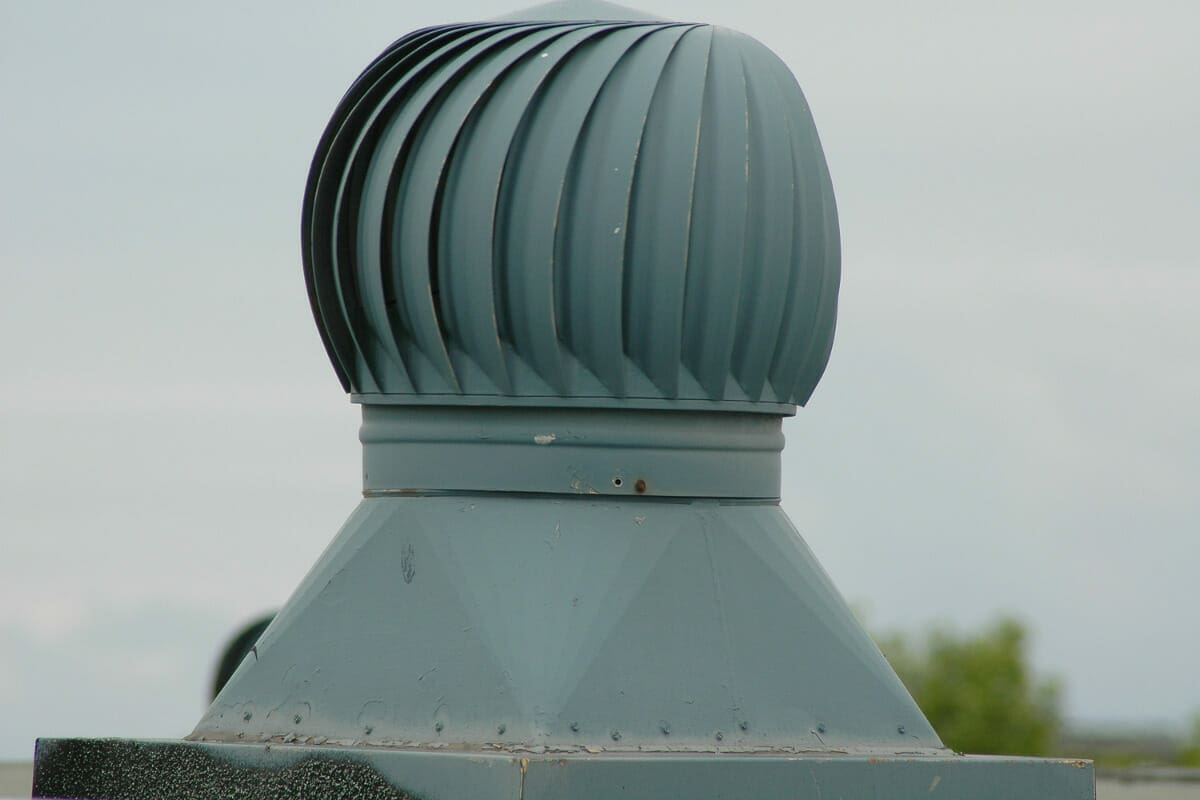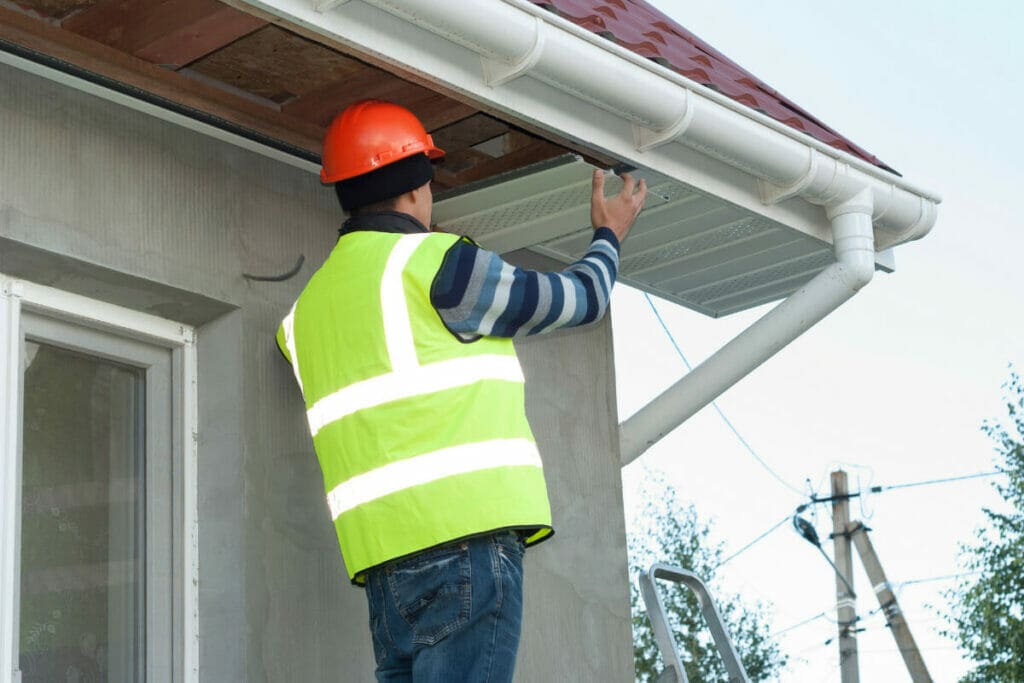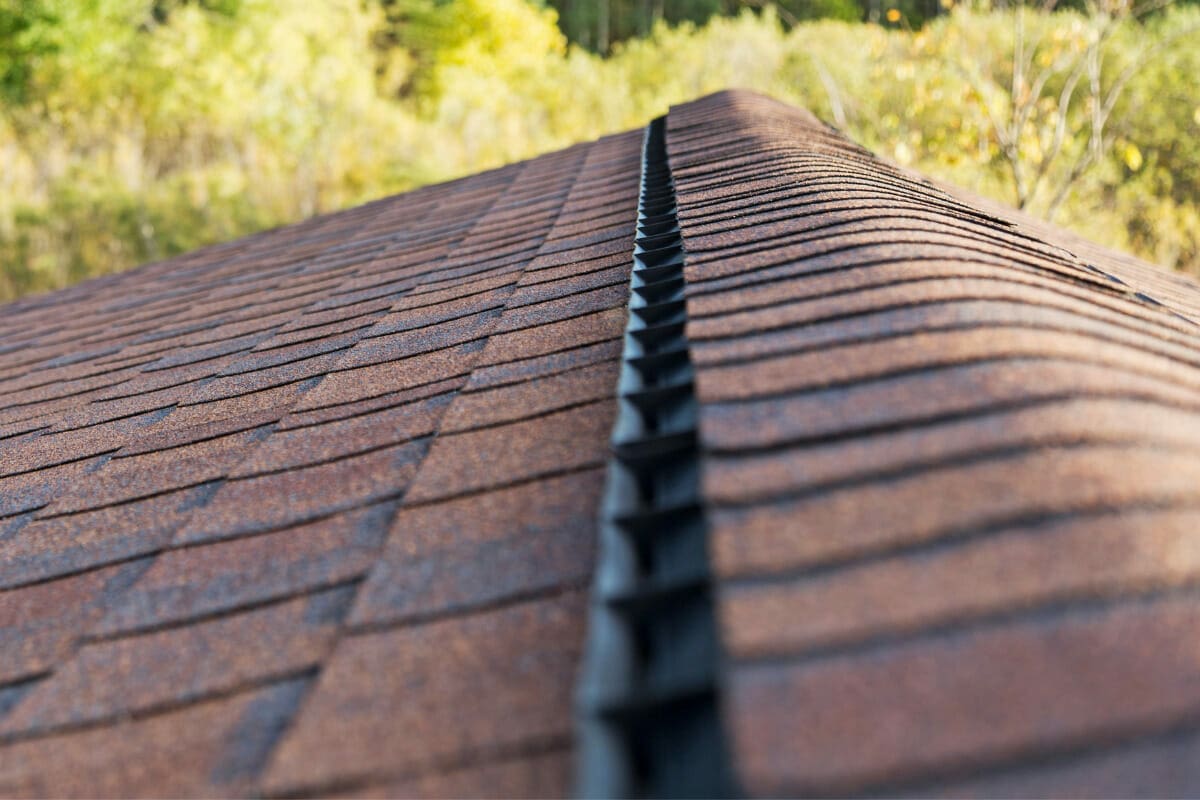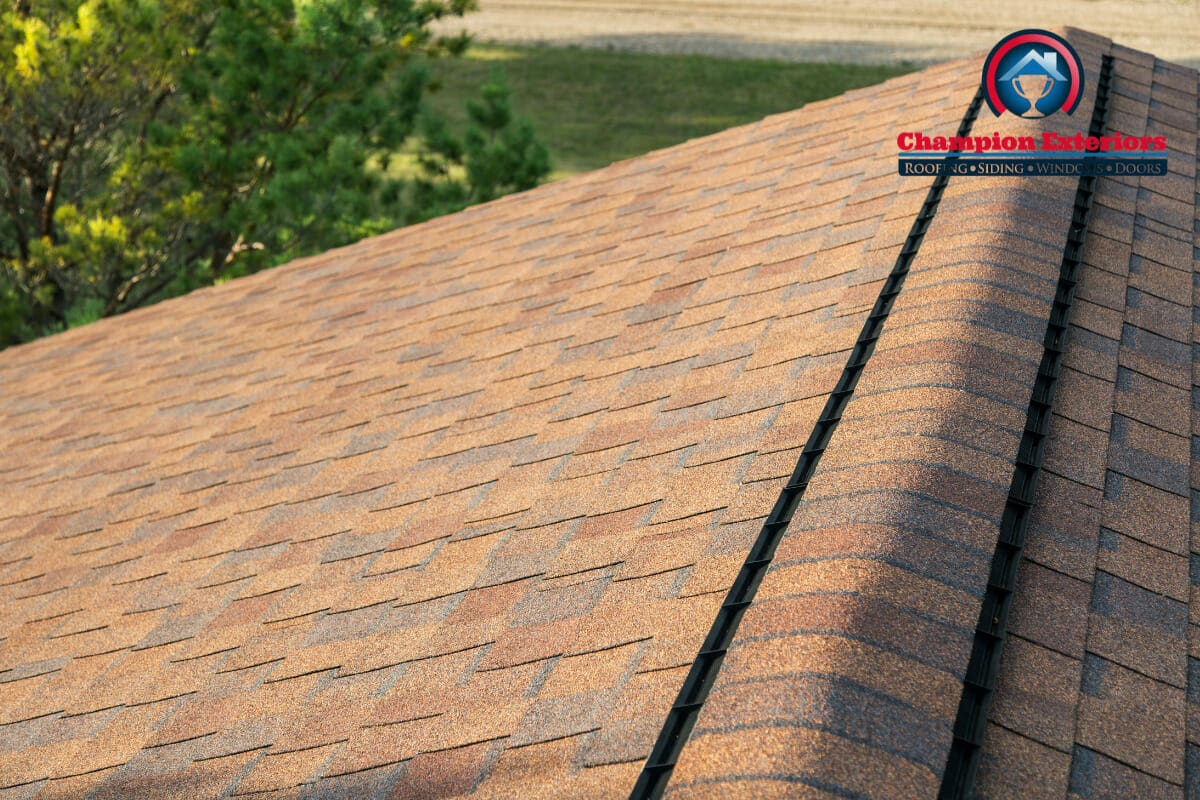Are you tired of dealing with a hot and stuffy attic space? Are you concerned about the potential damage moisture and mold could cause to your roof? If so, then you may need to reconsider your roof ventilation system.
In this blog post, we’ll explore how roof vents improve the health and longevity of your home and
why you may need different ones depending on your roof.
What Is Roof Ventilation?
Roof ventilation is the process of allowing airflow in and out of the space below a building’s roof. You can achieve adequate ventilation by installing vents or fans in the roof, which enable air to circulate and prevent moisture buildup. Proper roof ventilation is essential for maintaining a comfortable indoor environment, as well as preserving the structural integrity of the building itself.
Roof ventilation also helps promote better quality inside a home or office. In commercial buildings, roof vents protect the roofing materials from being damaged by cycling fresh air throughout the roofing system.
Reasons Why You Need Different Roof Vents On Your Roof
Trapped moisture and humid air inside your home can make the air feel thick and stuffy. It also leads to a rise in the temperature indoors. Air ventilation systems are important since they exhaust the humid and hot air and allow fresh air to enter, especially in areas like the kitchen and bathroom.
While there are many different types of roof vents available for your home, you need to consider the below factors before making a decision.
Climate
During summer, your attic is the hottest space in your home. In addition to this, if moisture and humid air remain trapped in your attic, it will damage the roofing shingles and cause them to deteriorate over time.
It’s also important to consider how different regions have different weather patterns and temperature ranges. For instance, areas with hot and humid climates require ventilation to keep the attic cool and reduce moisture buildup. While regions with heavy snowfall require proper ventilation to prevent ice dam formation. Therefore, the type of roof vent you install will depend on your climate and the specific challenges it poses to your home.
Roof Design
The design of your roof plays a significant role in determining the type of roof vent you need. For example, a sloped roof may require a different type of vent than a flat roof. Similarly, the shape and size of your roof also have an impact on ventilation requirements. Therefore, it’s crucial to choose the right type of vent that complements the design of your roof.
Airflow
Humid and polluted air, along with any foul odors, can, potentially, cause health issues, which may make your home unlivable. That’s why having continuous air circulation inside your home is crucial to keeping your home comfortable.
The right type of roof vent will ensure proper ventilation and air circulation, which will ultimately improve the overall health and safety of your home. It’s essential to consider the airflow requirements of your home when choosing the right roof vent.
Prevent Moisture Buildup
Excessive moisture buildup in your attic can lead to mold and mildew growth, which causes damage to your roof and compromises its structural integrity. By creating a proper ventilation system and promoting good airflow, the appropriate roof vent will prevent moisture buildup.
In addition to preventing moisture buildup, proper ventilation will help extend your roof’s lifespan. Therefore, selecting the right type of roof vent is essential to ensure that your home is protected from moisture buildup and subsequent damage.
From the guide below, you can choose the roof vent that best suits your needs. It also helps to discuss your choice with a professional to ensure you have selected the appropriate roof vents for your location.
Types Of Active Vents
Active roof vents play an important role in ventilating areas that cannot be adequately ventilated with passive ventilation. By removing moisture, heat, and pollutants from the attic, they mitigate the risk of mold growth, prolong the lifespan of roofing materials, and enhance indoor air quality.
In order to achieve this, there are various types of active roof vents available. Turbine vents and powered vents are among the most common types that can be installed based on the specific needs of a building or home.
Turbine Vents
Turbine vents, also known as whirlybird vents, rotary vents, or wind turbines, are a type of active roof vent that utilizes wind power to function. Installed on the roof of a building, these vents consist of cylindrical metal or plastic housing containing vanes or fins. As the wind blows, these vanes or fins spin and create a vacuum that effectively draws hot and stale air out of the attic or roof space, replacing it with cooler air from outside.
They are relatively inexpensive and simple to install, making them a popular choice for many homeowners. In addition, since turbine vents do not require electricity or any other power source, they are virtually maintenance-free and operate quietly without any moving parts.

Power Vents
Similar to turbine vents, power vents are another type of active roof vent that operate with electricity. They are also called electric vents, attic fans, or powered attic ventilators. These vents function the same as turbines by extracting hot and stagnant air from the attic or roof space and replacing it with cooler air from outside.
Power vents typically feature a fan that is installed on the roof or in the attic and is powered by electricity. The fan is typically controlled by a thermostat or humidistat that activates it when the temperature or humidity in the attic reaches a certain level. Once activated, the fan begins to draw hot air out of the attic, effectively reducing heat buildup and lightening the workload on your air conditioning system.

Types Of Passive Vents
Passive ventilation systems, also called static vents, offer another option for ventilating buildings or homes. Unlike active roof vents, which rely on mechanical or electrical components, passive vents harness natural airflow to circulate air.
Passive vents operate by taking advantage of the difference in pressure between the attic space and the outdoors. As warm air rises and escapes through the vents, a vacuum is created, which in turn pulls in cooler air from the outside. This allows for a continuous exchange of air without requiring any additional energy or upkeep.
Passive vents can take many forms, including windows, gable vents, soffit vents, and ridge vents.
Gable Vents
Gable vents are passive ventilation systems used to ventilate attics or other enclosed spaces in a building. They are installed on the gable end of the attic, which is the triangular portion of the wall that meets the roof.
Gable vents come in various shapes and sizes to fit the specific needs of different buildings. They can be made from various materials, including wood, metal, and plastic. The size and number of gable vents needed for a particular building depend on factors such as the size of the attic space, the amount of insulation, and the local climate.

Soffit Vents
Soffit vents, which are installed under the eaves of a roof, below the fascia board, represent a passive ventilation system that allows cool air to enter the home and attic space. This air helps regulate the temperature in a home and prevent moisture buildup. Additionally, soffit vents work in conjunction with other types of vents, such as ridge vents or gable vents, to provide adequate airflow and ventilation throughout the attic space.
These vents are usually constructed of aluminum or vinyl and are available in various styles to match the building’s design. They also come in two types; continuous and individual.

Ridge Vents
Ridge vents also serve as passive roof vents, and are located on the ridge of a roof and are commonly covered by shingle caps so they aren’t noticeable from the ground. As hot air rises to your attic, these vents exhaust the hot air, allowing it to be replaced by cooler air from another vent.
By pairing ridge vents with other vents such as soffit or gable vents, homeowners can achieve more consistent and reliable ventilation in their attic or roof space. These ventilation systems help regulate temperature and humidity more effectively than just single vents.

Do You Want To Install Vents On Your Roof?
While you may not think about it much, the ventilation system within your attic plays a vital role in your home’s air circulation and comfort. If you’re interested in exploring your options for attic vent installation or replacement in New Jersey, we highly recommend reaching out to our experts at Champion Exteriors.
With our extensive experience and roofing services, including roof installation and replacement, you can trust that we will help you find the right attic vent solution for your home. Don’t wait any longer to improve your home’s ventilation and energy efficiency, contact Champion Exteriors today! Schedule a consultation with us by calling (609) 845-3576, and take the first step towards a healthier, more comfortable living environment.


